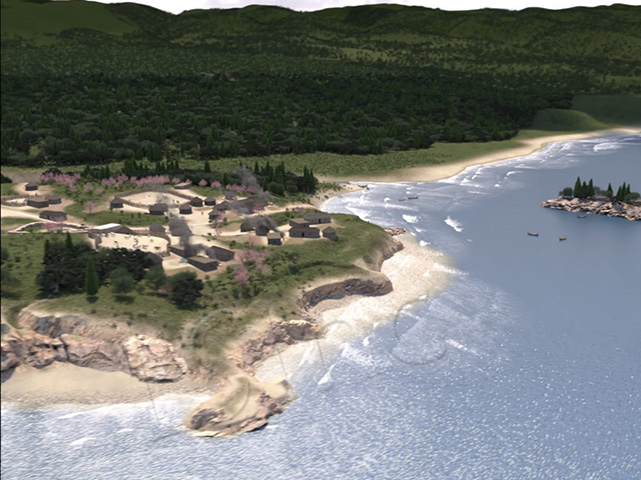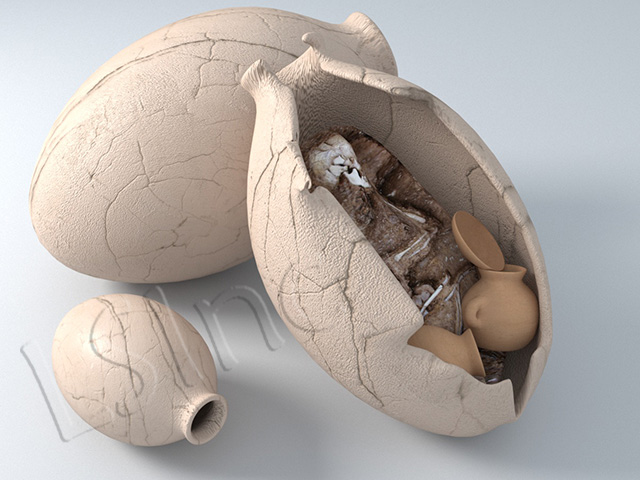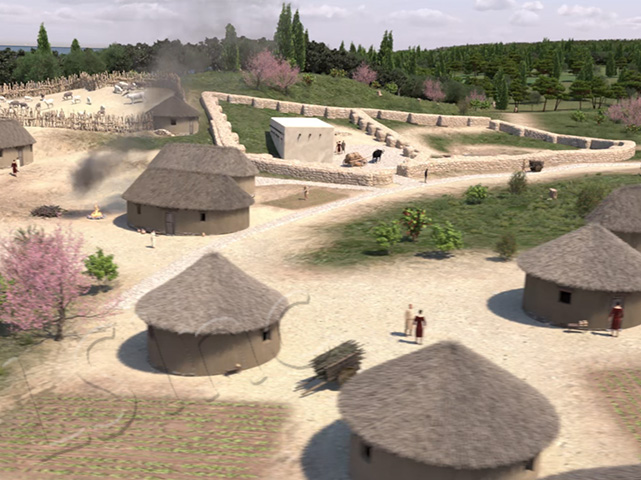 The cluster of houses that comprised the Chalcolithic village was scattered across the two hills on the promontory overlooking the sea and within a short walk of a sandy inlet to the south that served as a place for small ships to land (hover over the image at the left to enlarge). The houses were round, oval, or rectangular. They were mostly single spaces inside and constructed of stones and pebbles usually with a plaster coating on the exterior and with thatched roofs. The most important structure of the settlement was the so-called Enceinte Sacree compound focused on the central well. The building there was most likely the town religious and administrative center. The compound itself was enclosed by a low stone temenos wall; there appears to be no fortification wall protecting the settlement at this time.
The cluster of houses that comprised the Chalcolithic village was scattered across the two hills on the promontory overlooking the sea and within a short walk of a sandy inlet to the south that served as a place for small ships to land (hover over the image at the left to enlarge). The houses were round, oval, or rectangular. They were mostly single spaces inside and constructed of stones and pebbles usually with a plaster coating on the exterior and with thatched roofs. The most important structure of the settlement was the so-called Enceinte Sacree compound focused on the central well. The building there was most likely the town religious and administrative center. The compound itself was enclosed by a low stone temenos wall; there appears to be no fortification wall protecting the settlement at this time.
 The other main features of Chalcolithic Byblos were the c.2000 clay-pot burials scattered all across the town, with no particular orientation or relationship to the houses. The ovoid or globular jars (ranging from c.20cm to 1.95m) contained often flexed bodies accompanied with burial goods (hover over the image at the left to enlarge).
The other main features of Chalcolithic Byblos were the c.2000 clay-pot burials scattered all across the town, with no particular orientation or relationship to the houses. The ovoid or globular jars (ranging from c.20cm to 1.95m) contained often flexed bodies accompanied with burial goods (hover over the image at the left to enlarge).
 A detailed view of Chalcolithic Byblos (hover over the image at the left to enlarge) showing the different types of houses and accompanying plots and pens. The Enceinte Sacree can be clearly seen differentiated by its walled compound. Take a look at our animated flyover to see how we visualized the entire settlement.
A detailed view of Chalcolithic Byblos (hover over the image at the left to enlarge) showing the different types of houses and accompanying plots and pens. The Enceinte Sacree can be clearly seen differentiated by its walled compound. Take a look at our animated flyover to see how we visualized the entire settlement.